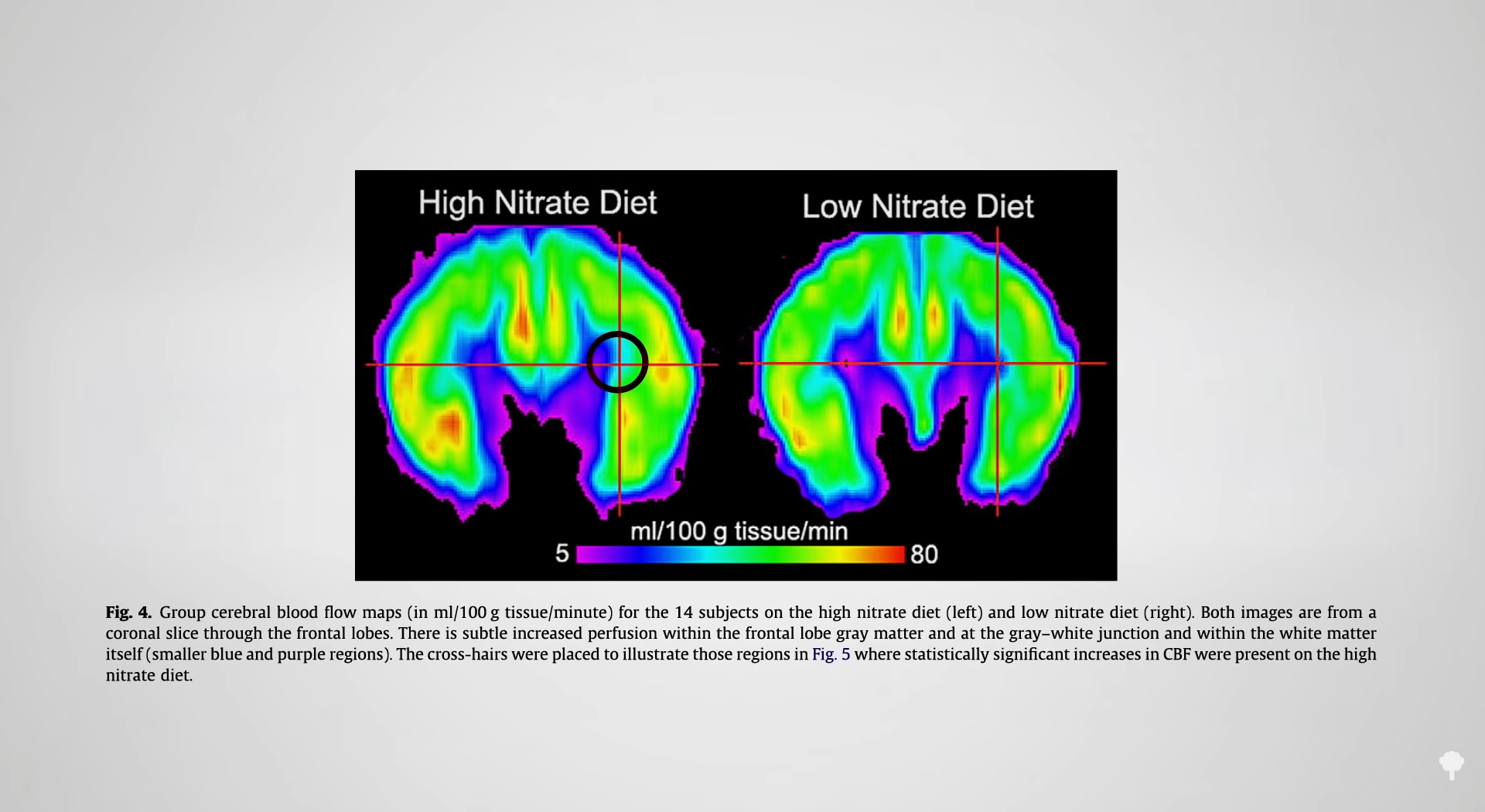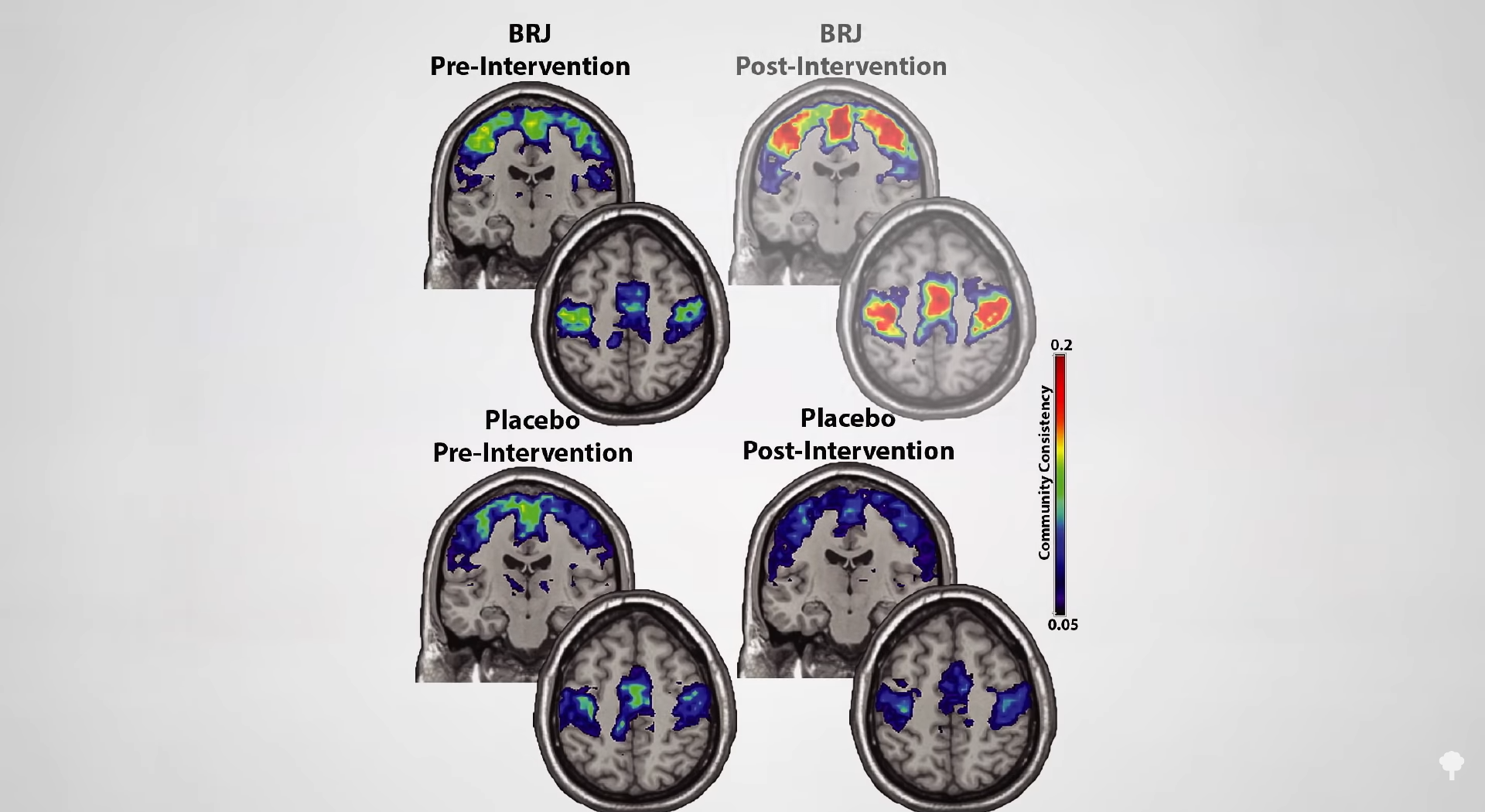
Cocoa and nitrite-rich vegetables, such as leafy greens and beets, are put to the test for cognitive function.
“The production of NO in the brain and its role in the control of neuronal [nerve] functions has been comprehensively investigated in animals studies.” NO, or nitric oxide, is the “open sesame” molecule that dilates our blood vessels and is boosted by the consumption of nitrate-rich vegetables. “However, little evidence on the role of NO in brain function in humans exists”—until it was recently put to the test, that is.
As I discuss in my video Best Brain Foods: Greens and Beets Put to the Test, study participants ate a lot of green leafy vegetables with some beet juice, and then researchers measured their cerebral blood flow. At 0:36 in my video, you can see a spot with improved flow within a brain area “known to be involved in executive functioning.” Improved blood flow doesn’t necessarily translate into improved cognitive function, though. For example, when researchers fed people tart cherries, “despite some indication of improved blood flow,” it didn’t appear to manifest as improved cognitive performance.

And, indeed, some of the initial studies were disappointing. Researchers gave study participants more than a cup of cooked spinach, but saw no immediate boost in their ability to carry out simple tasks. When others were given a similar battery of simple tasks after consuming cocoa, again, researchers saw no significant effect. Might the tasks have been too simple? When individuals were put through a more demanding set of tasks, such as counting backwards in threes for minutes at a time, “acute improvements in mood and cognitive performance” were seen after consumption of cocoa. What if you tried doing that same challenge after drinking two cups of organic beet juice, which has about the same amount of nitrate as two cups of cooked arugula?
As you can see at 1:42 in my video, researchers found significantly improved performance in terms of more correct answers on the sustained subtraction task. “These results suggest that a single dose of dietary nitrate”—for example, nitrate-rich vegetables—“can modify brain function, and that this is likely to be as a result of increased NO [nitric-oxide] synthesis,” but how do we know it’s the nitrate? Beets are packed with all manner of phytonutrients, like the betalain red pigment. One way to tease it out would be to come up with a kind of nitrate-depleted beet juice that has everything in beets but the nitrate and see if that works just as well. Researchers did exactly that.

Indeed, researchers developed a nitrate-depleted beetroot juice placebo. Within two weeks of supplementation with real beet juice, a group of diabetic patients got “a significant improvement in simple reaction time” compared to the nitrate-free placebo. We’re only talking about 13 milliseconds, but other interventions, like balance training, which only increased reaction time by about 7 milliseconds, were associated with significantly lower fall risk, as you can see at 2:42 in my video. And, of course, in athletes, those fractions of a second can sometimes make a difference.

“At very high exercise intensities…, cognitive task performance deteriorates, with a pronounced detrimental effect on reaction time,” and that may be just when you need it the most—when you’re playing football, for instance, and need to quickly make appropriate decisions while simultaneously going all out. And, once again, beets come to the rescue—significantly reducing reaction time and not only improving physical performance, but mental performance, too.
Can it improve the structure of our brain? Indeed, cognitive training and aerobic exercise can actually affect the structure of the human brain. There’s something called neuroplasticity, where your brain can adapt, changing its configuration as you learn to play piano, for example.
We used to think only younger brains could do this, but now we know it can occur in the aging brain as well. Can’t “beet” that! Or, can you? We didn’t know…until now. As you can see at 3:45 in my video, researchers looked at the brain before and after participants engaged in a six-week exercise program and measured connectivity between various parts that control movement. They found no big changes at all. But, when the subjects drank beet juice before doing the same amount of exercise, researchers found a big difference. The exercise plus beetroot juice group developed “brain networks that more closely resembled those of younger adults, showing the potential enhanced neuroplasticity conferred by combining exercise” and nitrate-rich vegetables.

